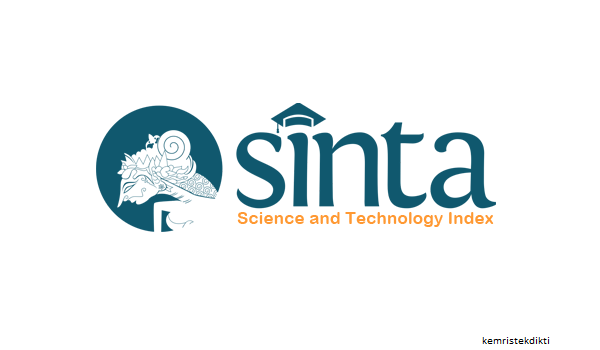Analisis Fungsi Pendengaran pada Masinis PT Kereta Api Indonesia (Persero): Kajian Tingkat Kebisingan Lokomotif
DOI:
https://doi.org/10.58185/j-mestahat.v4i2.133Keywords:
noise, locomotive, NIHL, years of service, train driverAbstract
Long-distance trains are generally a series of passenger cars pulled by diesel-electric locomotives. With a fairly high level of locomotive noise, the driver is susceptible to noise exposure. The study aims to determine the relationship between length of service and hearing function of all drivers, assistant drivers, driver supervisors and prospective drivers of PT. Kereta Api Indonesia, and its relationship with locomotive cabin noise. Primary data were taken from the audiometry results during the 2023 medical check-up and service period data using an electronic questionnaire. The noise of the CC206 locomotive when driving ranged from 75 dBA to 120.9 dBA. The audiometry analysis data and service period have c2count = 117.23, so it is concluded that there is a relationship between service period and decreased hearing function. This can happen because the longer the driver is exposed to noise, the higher the risk of hearing loss. The application of additional soundproofing, installation of air conditioning units and adjustment of the flute position in the locomotive can be done to reduce noise in the locomotive cabin.
Downloads
References
Agra Mohamad Khaliwa, Magdalena, B., Muhamad Razif Iqbal, Arif Susanto, & Achmad Supajar Ziarahman. (2023). Pengukuran dan Pemetaan Tingkat Kebisingan pada Area Dapur Messhall PT X. Jurnal Semesta Sehat (J-Mestahat), 3(1), 46–55. https://doi.org/10.58185/j-mestahat.v3i1.104
Andarani, P., Desinta, I., Budiawan, W., Syafrudin, S., Hadiwidodo, M., & Huboyo, H. S. (2019). Noise Exposure Assessment and Estimated Excess Risk of Cabin Personnel in the Locomotive-CC205. Indian Journal of Public Health Research and Development, 10(3), 789–794. https://doi.org/10.5958/0976-5506.2019.00598.9
Badan Pusat Statistik. (2024a). Jumlah Penumpang dan Barang Melalui Transportasi Kereta Api Indonesia Tahun 1987-2022. https://www.bps.go.id/id/statistics-table/1/MTQxNCMx/jumlah-penumpang-dan-barang-melalui-transportasi-kereta-api-indonesia-tahun-1987-2022.html
Badan Pusat Statistik. (2024b). Jumlah Penumpang Kereta Api (Ribu Orang), 2023. https://www.bps.go.id/id/statistics-table/2/NzIjMg==/jumlah-penumpang-kereta-api.html
Basner, M., Babisch, W., Davis, A., Brink, M., Clark, C., Janssen, S., & Stansfeld, S. (2014). Auditory and non-auditory effects of noise on health. The Lancet, 383(9925), 1325–1332. https://doi.org/10.1016/S0140-6736(13)61613-X
Chen, X., Lin, J., Jin, H., Tan, A., & Yan, L. (2021). Acoustics Source Identification of Diesel Engines Based on Variational Mode Decomposition, Fast Independent Component Analysis, and Hilbert Transformation. Shock and Vibration, 2021(1). https://doi.org/10.1155/2021/8832932
Gutor, E. М., Zhidkova, E. A., & Gurevich, K. G. (2022). Risk Factors for Developing Diseases in Locomotive Crew Workers. Meditsina Truda I Promyshlennaya Ekologiya, 61(1), 43–53. https://doi.org/10.31089/1026-9428-2022-62-1-43-53
Lie, A., Skogstad, M., Johnsen, T. S., Engdahl, B., & Tambs, K. (2016). Noise-induced Hearing Loss in a Longitudinal Study of Norwegian Railway Workers. BMJ Open, 6(9). https://doi.org/10.1136/bmjopen-2016-011923
Locher, B., Piquerez, A., Habermacher, M., Ragettli, M., Röösli, M., Brink, M., Cajochen, C., Vienneau, D., Foraster, M., Müller, U., & Wunderli, J. M. (2018). Differences Between Outdoor and Indoor Sound Levels for Open, Tilted, and Closed Windows. International Journal of Environmental Research and Public Health, 15(1). https://doi.org/10.3390/ijerph15010149
Merijanti, L. T. (2022). Noise Exposure and Hearing Health in the Workplace. Jurnal Biomedika Dan Kesehatan, 5(3), 132–135. https://doi.org/10.18051/JBiomedKes.2022.v5.132-135
Metidieri, M., Rodrigues, H., Filho, F., Ferraz, D., Neto, A., & Torres, S. (2014). Noise-Induced Hearing Loss (NIHL): literature review with a focus on occupational medicine. International Archives of Otorhinolaryngology, 17(02), 208–212. https://doi.org/10.7162/S1809-97772013000200015
Natarajan, N., Batts, S., & Stankovic, K. M. (2023). Noise-Induced Hearing Loss. Journal of Clinical Medicine, 12(6). https://doi.org/10.3390/jcm12062347
National Institute for Occupational Safety and Health (NIOSH). (2024, February 16). Noise and Hearing Loss: Implement Engineering Controls. https://www.cdc.gov/niosh/noise/prevent/engineering.html
Peraturan Direksi PT Kereta Api Indonesia (Persero) Nomor: PER.U/KL.104/VII/4/KA-2023 Tentang Peraturan Dinas 16A Mengenai Pengoperasian Lokomotif Diesel Dan Kereta Rel Diesel (2023).
Peraturan Menteri Tenaga Kerja Dan Transmigrasi Republik Indonesia Nomor PER.13/MEN/X/2011 Tentang Nilai Ambang Batas Faktor Fisika Dan Faktor Kimia Di Tempat Kerja, Biro Hukum Sekretariat Jenderal Kementerian Tenaga Kerja dan Transmigrasi Republik Indonesia (2011). https://jdih.kemnaker.go.id/asset/data_puu/PER_13_2011.pdf
Platon, S.-N., & Tudor, A. (2014). Noise Control on Locomotive Driver Workingstation. Romanian Journal of Acoustics and Vibration, 11(1), 71–74.
Urman, S. C. (1987). A Survey of Railroad Occupational Noise Sources. Transportation Research Record, 1143, 22–25. https://onlinepubs.trb.org/Onlinepubs/trr/1987/1143/1143-004.pdf
Zeydabadi, A., Askari, J., Vakili, M., Mirmohammadi, S. J., Ghovveh, M. A., & Mehrparvar, A. H. (2019). The effect of industrial noise exposure on attention, reaction time, and memory. International Archives of Occupational and Environmental Health, 92(1), 111–116. https://doi.org/10.1007/s00420-018-1361-0














